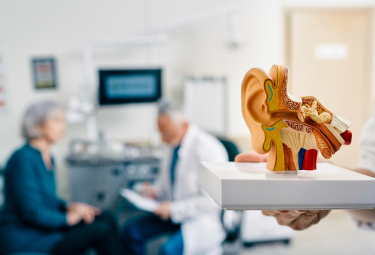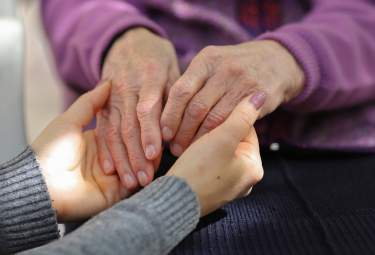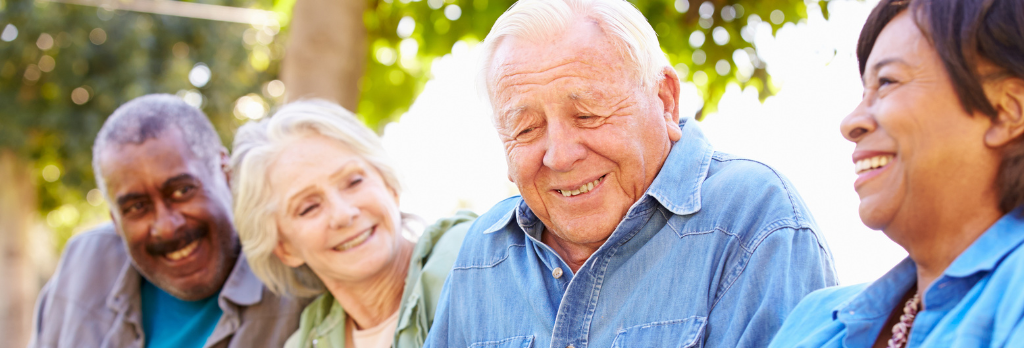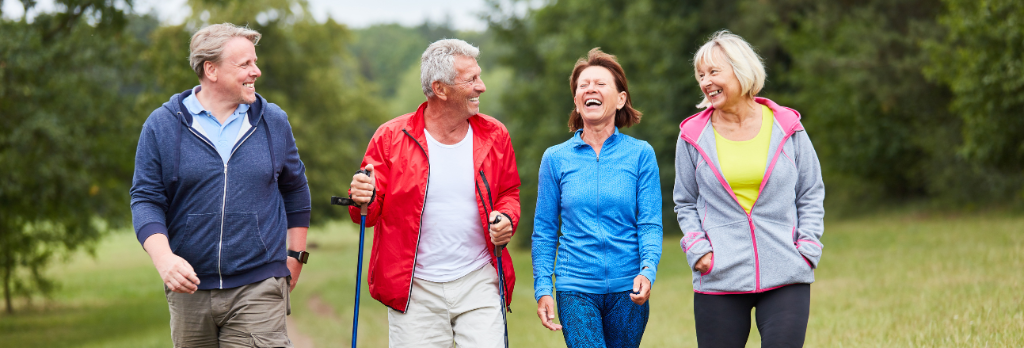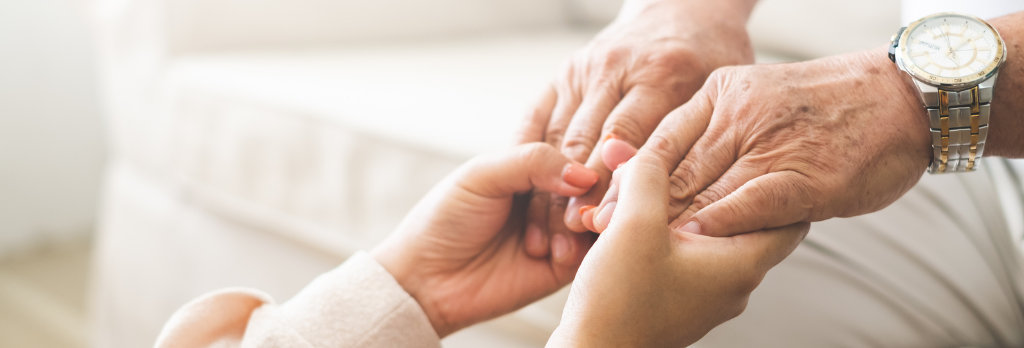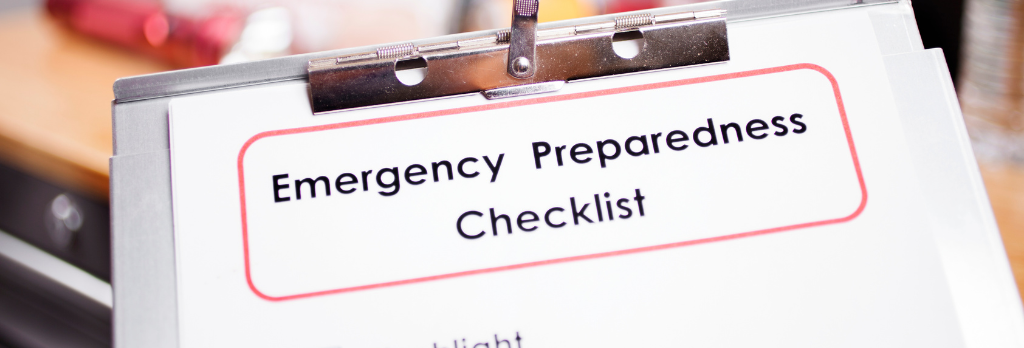Coping With Grief and Loss
April 21, 2025When someone close to you dies, your world changes. You are in mourning — feeling grief and sorrow at the loss. You may feel numb, shocked, and fearful. You may feel guilty for being the one who is still alive. You may even feel angry at your loved one for leaving you. All of these feelings are normal. There are no rules about how you should feel. There is no right or wrong way to mourn.
When you grieve, you can feel both physical and emotional pain. People who are grieving often cry easily and can have:
- Trouble sleeping
- Little interest in food
- Problems with concentration
- A hard time making decisions
As time passes, you may still miss your loved one. But for most people, the intense pain will lessen. There will be good and bad days. You may feel guilty or surprised for laughing at a joke or enjoying a visit with a friend. It is important to understand that these can be common feelings.
Finding a support system
There are many ways to grieve and to learn to accept loss. Try not to ignore your grief. Support may be available until you can manage your grief on your own.
While family and compassionate friends can be supportive, they may be grieving, too. Some people find that sharing memories and stories about the person who is gone is one way to help each other. Sometimes, people hesitate to bring up the loss or mention the name of the person who died because they worry this can be hurtful. But many people may find it helpful to talk directly about their loss. You are all coping with the death of someone who was important in your lives.
What is complicated grief?
It is normal to feel sad, numb, or lost for a while after someone close to you dies. But for some people, mourning can go on so long or be so distressing that it becomes unhealthy. This prolonged and intense reaction to loss is known as complicated grief. People with this condition may be unable to comprehend or accept the loss, experience intense sorrow and emotional pain, and have trouble resuming their own life and making plans for the future. Other signs of complicated grief may include having overwhelmingly negative emotions, feeling preoccupied with the person who died or the circumstances of the death, and being unable to find meaning or a purpose in life.
Complicated grief can be a serious condition. Those who have it may need additional help to overcome the loss. If sadness is making it difficult for you to carry on in your day-to-day life, help is available. Reach out to a support group, mental health professional, or loved ones for support. If cost is a factor for you, ask your doctor or other healthcare provider if they know of any local health professionals or programs that offer low-cost or free help.
How grief counseling can help
Some people find that grief counseling makes it easier to work through their sorrow. Regular talk therapy with a grief counselor or therapist can help those who are grieving learn to accept a death.
There are also support groups for grieving people to help each other. These groups can be specialized — people who have lost loved ones to Alzheimer’s disease, for example — or they can be for anyone learning to manage grief. Check with local hospitals and senior centers, nursing homes, religious groups, funeral homes, or your doctor to find support groups in your area. Hospice care professionals can also provide grief counseling, sometimes called bereavement support, to the family of someone who was under their care. You can also ask hospice workers for bereavement support even if hospice was not used before the death.
For older adults who are socially isolated or have limited family nearby, there are resources available. Try one of the suggestions below:
- Online support groups. Many online forums or support groups online are free and can help offer support from the home.
- Online therapy or counseling sessions. If you’re looking for a therapist or counselor to address your grief or loss, many offer online sessions that you can attend from your home.
- Support books. Books can be a great way to understand grief and sorrow, and they can provide tips to help overcome these feelings. Check your local library or ask a librarian for recommendations.
- Community resources. Some communities offer grief and loss counseling or resources. Check with your local community center, senior center, faith community, or hospital to learn about what they offer.
Taking care of yourself while grieving
In the beginning, you may find that taking care of details and keeping busy helps. For a while, family and friends may be around to assist you. But there comes a time when you will need to face the change in your life.
Here are some ideas to keep in mind:
- Take care of yourself. Grief can be hard on your health. Exercise regularly, eat healthy food, and try to get enough sleep. Bad habits, such as drinking too much alcohol or smoking, can put your health at risk.
- Make mealtime plans. Some people who have lost a loved one lose interest in cooking and eating. Sometimes eating at home alone feels too quiet, so it may help to have lunch with friends. Turning on the radio or TV during meals can also help. For information on nutrition and cooking for one, look for books at your local library, bookstore, or online.
- Talk with caring friends. Let family and friends know when you want to talk about your loved one. When possible, accept their offers of help and company.
- Participate in your favorite activities. Doing things you enjoy, such as painting, biking, volunteering, or social club events can help improve overall mood and well-being. Listening to uplifting music may also bring comfort.
- Reach out to your faith community. Many people who are grieving find comfort in spending time with others who share their religious beliefs, praying, or reading religious or spiritual scripture.
- See your doctor. Keep up with visits to your healthcare provider. If it has been a while, schedule a check-up and bring your doctor up to date on pre-existing medical conditions and any new health issues that may be of concern. Let your health care provider know if you are having trouble taking care of everyday activities such as personal hygiene and dressing, or fixing meals.
- Mourning takes time. It’s common to have a roller coaster of emotions for a while.
If you have children, remember that they are grieving, too. It will take time for the whole family to adjust to life without your loved one. You may find that your relationship with your children and their relationships with each other have changed. Open, honest communication is important.
When you feel ready, go through your loved one’s clothes and other personal items. It may be hard to give away these belongings. Instead of parting with everything at once, you might make three piles: one to keep, one to give away, and one “not sure.” Ask your children or others to help. Think about setting aside items such as a special piece of clothing, watch, favorite book, or picture to give to your children or grandchildren as personal reminders of your loved one.
Mourning the loss of a spouse or partner
If you have lost a spouse or partner, you may worry about how you will take care of yourself or your home. Many couples divide up their household tasks. One person may pay bills and handle car repairs. The other may cook meals and mow the lawn. Splitting up jobs often works well until there is only one person who must do it all. Learning to manage new tasks — from chores to household repairs to finances — can take time.
Reaching out to friends and family who are close by to help manage tasks right after your loss can help. If you don’t have loved ones nearby, local organizations may be able to help. The Administration for Community Living (ACL) offers online tools to help connect people with resources in their community. After a while, you may develop a better understanding of how to handle tasks on your own.
Being alone can also increase concerns about safety. It’s a good idea to ensure there are working locks on the doors and windows.
Facing the future without a spouse or partner can be scary, especially for those who have never lived alone. Those who are both widowed and retired may feel very lonely and become depressed. Talk with your doctor about how you are feeling.
Socializing after the death of a loved one
It may be overwhelming to think about going to parties or other social events without your loved one. It can be hard to think about coming home alone. If you were married or had a long-time partner, you may feel anxious about dating. Many people miss the feeling of closeness that marriage or other intimate relationship brings. After time, some may be ready to have a social life again.
Here are some things to remember:
- Go at a comfortable pace. There’s no rush.
- It’s okay to make the first move when it comes to planning things to do.
- Volunteer.
- Try group activities. Invite friends for a potluck dinner or participate in an activity at a local community or senior center.
- Consider lower-stress, informal outings such as walks or movies.
- Find an activity you like. You may have fun and meet people who share your interests.
- You can develop meaningful relationships with friends and family members of all ages.
- Many people find that pets provide comforting companionship.
Getting your legal and financial paperwork in order
When you feel ready, you might consider getting your legal and financial affairs in order. If you were married and your spouse died, you may need to update certain legal documents and other paperwork. For example, you might need to:
- Write a new will and update your advance care planning.
- Look into a durable power of attorney for legal matters and health care in case you are unable to make your own medical decisions in the future.
- Put joint property (such as a house or car) in your name.
- Consider changes you may need to make to your health insurance as well as to your life, car, and homeowner’s insurance.
- Make a list of bills you will need to pay in the next few months, for example, your rent or mortgage; utilities such as electricity, water, and phone and internet services; insurance; and state and federal taxes.
To learn more, please visit https://www.nia.nih.gov/health/grief-and-mourning/coping-grief-and-loss.


